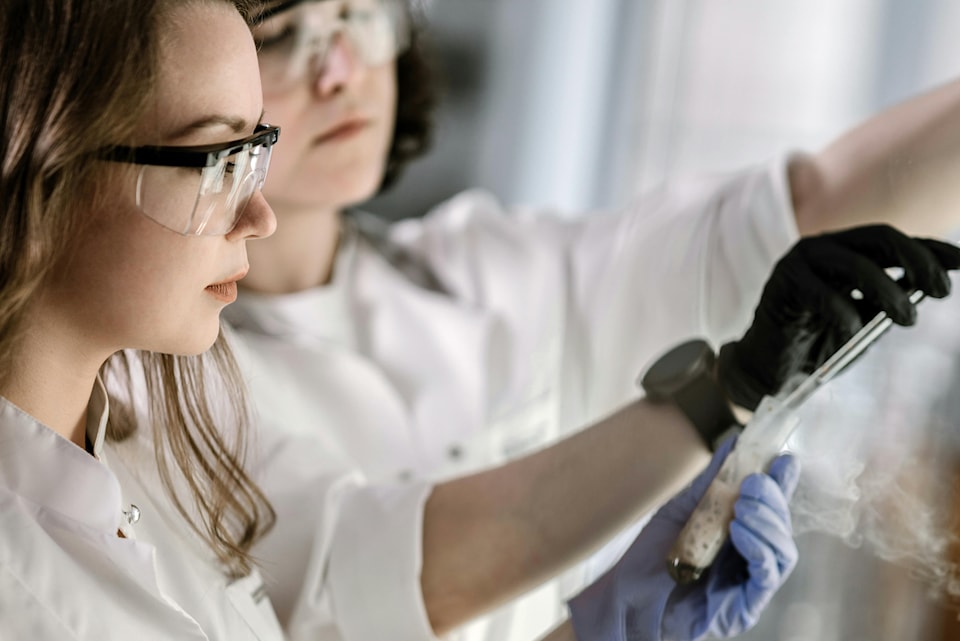Retired federal employee Katie Oppen described her biggest problem to be her husband not wanting her to go to university.
“I have a 15-year bachelor’s degree. It took me that long and I just persisted and I took one course at a time or two,” Oppen said.
“Through that 15 years, I had my kids and I had a small business on the side and a cranky husband to deal with. He was the biggest barrier here and he wouldn’t pay for the tuition and I didn’t have any money of my own,” she said.
“I had these little dinky part-time jobs and things, but he didn’t want me to work either. So you’ve got to remember this is back in 1971,” Oppen said. She said she was married to her husband for 26 years, 24 of them unwillingly.
Today, the International Day of Women and Girls in Science acts as a reminder to work to close the gender gap in science.
Oppen said throughout her schooling she met some terrible male supervisors or superiors but also met some who respected her and fought for her work. However, if her husband had been more supportive of her goals, things could have been different.
“I was going to be in my first year of university when I was 17 and if my husband had backed me up, I could have zipped through that, got my degree, my bachelor’s degree, in four years. I would have gone on to grad school, I would’ve had a PhD. That was my path,” Oppen said.
“I really wanted to do that and I was capable of it and I could have been a contender. I could have been a prof, I could have been in that academic life which I really wanted to do and they made it so hard for women, even just the scheduling,” she said.
“The labs started at either eight in the morning or ended at five at night and I think they still do that. So how was a person, a mom with kids, going to make that 8 o’clock lab or stay until 5 o’clock?” Oppen said.
David Cramb, dean of the faculty of science at Toronto Metropolitan University, said he came from a place of white male privilege, overlooking some of the barriers in his education journey for women such as female grad students starting families at a young age.
“Success and excellence are measured in a different way from that we typically have for a classic male who had nothing else to do but study,” Cramb said.
“It’s one thing to be an ally and that is super important and to be a good mentor, but at the same time, there’s stuff that I just don’t know and I’m really careful and conscientious about. If my female grad students are telling me something about what life’s actually like, I listen really carefully and try to integrate that into supporting them in the best way I possibly can,” he said.
Cramb said letters of reference are a huge barrier for women as they tell someone more about the writer than the person they are writing about, with a bias in those letters disfavouring women.
Inside Higher Ed reported in March 2022 that studies have found that women in academic science are half as likely as men to receive excellent versus good letters of recommendation.
It said writers use significantly more powerful adjectives to describe men, whereas women are more often described with community-oriented terms.
The National Library of Medicine reported in 2022 that despite greater awareness and more initiatives, gender inequality in academia persists and change is slow.
Robert McLeman, professor of geography and environmental studies at Wilfrid Laurier University, said that historically there have always been more men in science and that allyship is essential.
“The only way change happens is if men recognize that change needs to happen too,” McLeman said.
“I actively look for ambitious young women who want to get ahead in science and if I can help them, I definitely do so. I think if I were to look over the students that I’ve supervised over the last 20 years undergraduate and graduate research assistants it’s more women than men,” he said.
“I don’t look like my students so much anymore. When I first started teaching 20 years ago, most of the kids were white and there was a disproportionate. You know the male-female ratio was different,” McLeman said.
“I don’t look like them anymore. But as long as I’m cognizant of that, that’s okay and I’m making sure that I use my position to give opportunities to students who might not otherwise get them,” he said.
Dr. Ronald Stewart, Humber professor and coordinator in bioscience, said he recognizes that even in his teachings, the advancements that women have made are underrepresented.
Stewart referenced Angelina Fanny Hesse, who made a major advancement in microbiology in the 1800s but her husband's boss Robert Koch got the credit for Hesse’s work.
“Robert Koch did great work; however, he did not do these things. So, in class, every time I can, I’ll emphasize women that have made major advances, especially women that never got the credit for making those major advances,” Stewart said.
“I think with male allies, it would help to right the wrongs that are being done,” he said.
“In science we typically do research, we publish papers, we advance fields. When I read through a scientific paper, the first thing I do is look at the quality of that work. I don’t look at who wrote it,” Stewart said.
He said it doesn’t matter to him which gender wrote the paper, more so the quality of the paper that matters, meaning scientific work and research can transcend gender.




